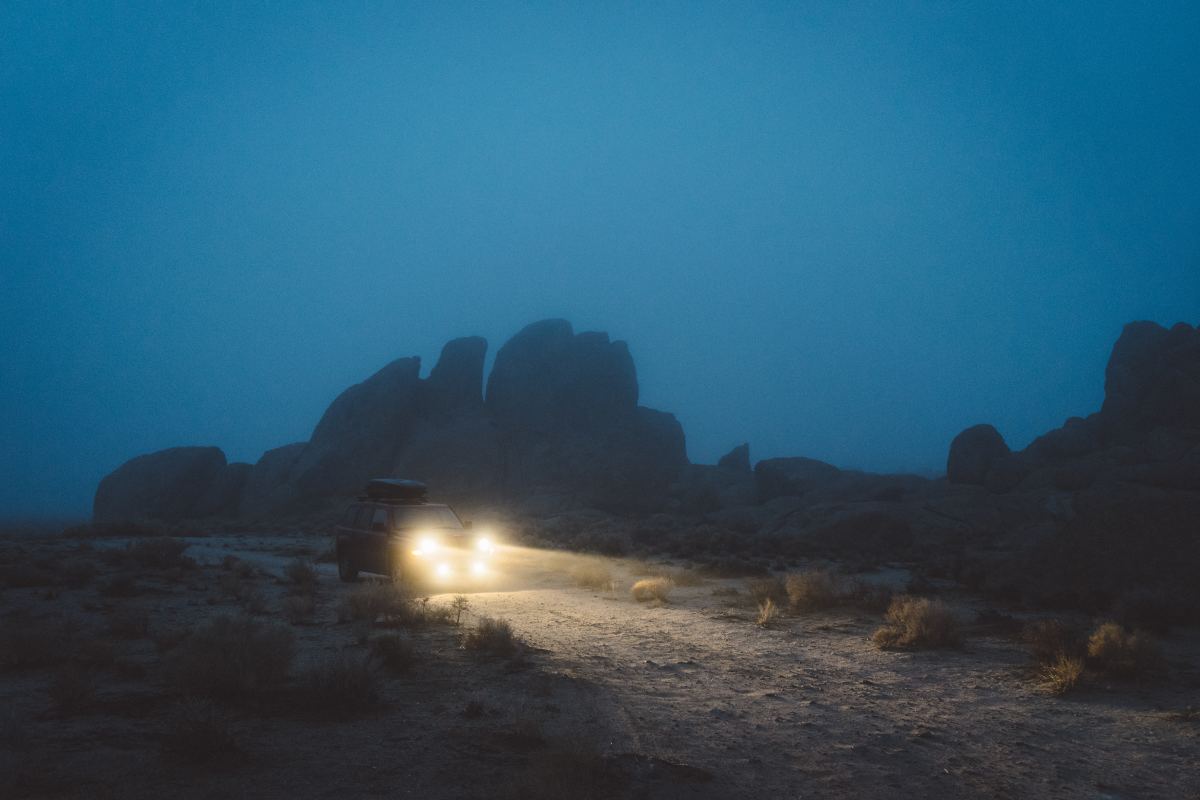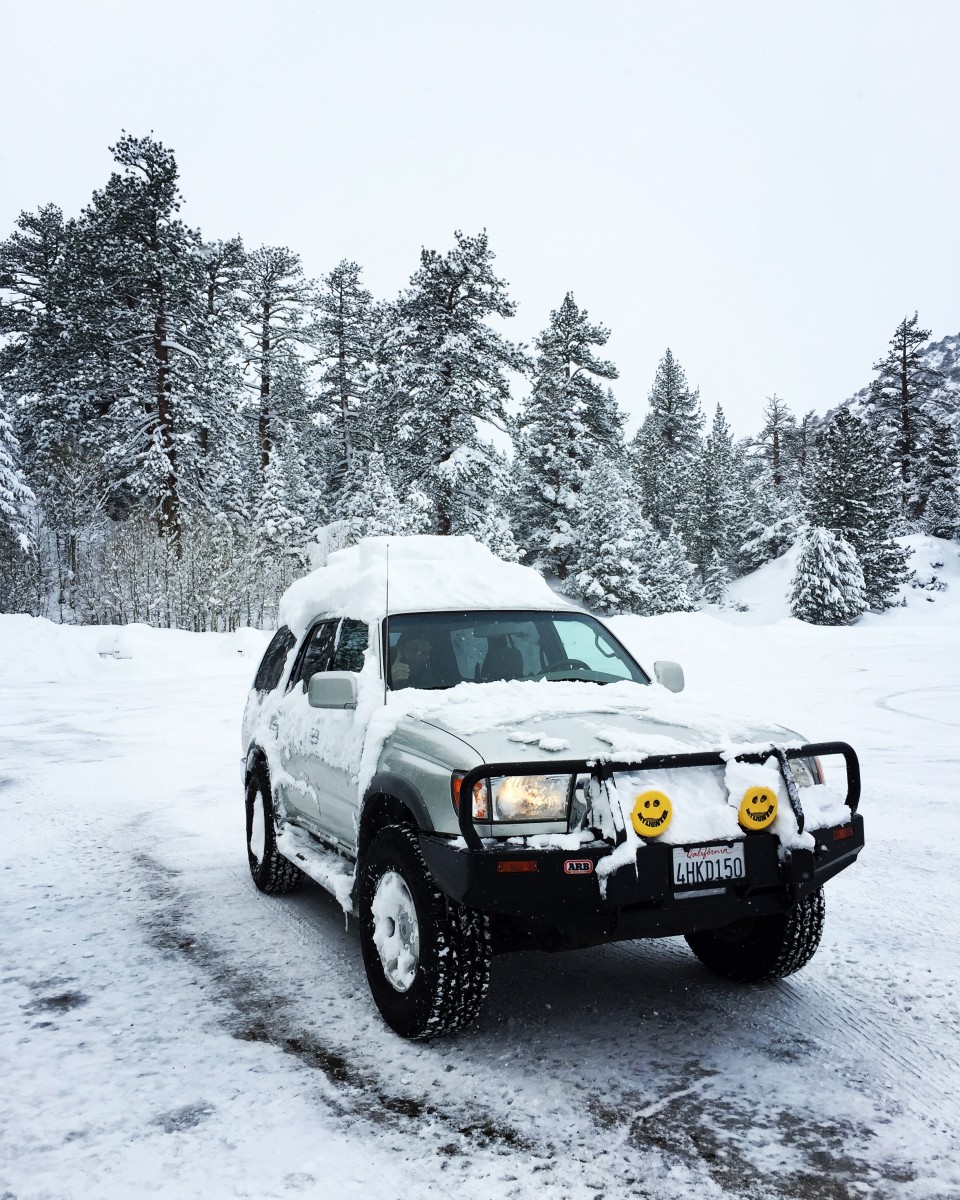There’s no debating that the popularity of overland travel has exploded in the last decade with #vanlife serving as the new rite of passage for many road-tripping enthusiasts. In fact, you almost can’t cruise down a freeway without rubbernecking at a raised rig sporting a rooftop tent and a couple of bright red Rotopax emergency gas canisters.
On any given Sunday, off-roaders with a GPS and Google Earth can descend on what was once the “road less traveled” and share a pin with a hundred of their closest friends, forcing many adventurers to find alternative routes to get away. One method of crowd control is to overland in winter.
Traveling on icy and snowy roads is kind of like driving through Baja at night: a sketchy maneuver begging for trouble. However, great risk can pay off if you’re fully prepared. Otherwise, you may end up in a ditch with serious injuries or even worse, a fatality.

OFF-ROAD READY: If you’ve made it far enough to even consider the challenges of an extended overland trip, you no doubt understand that a high-clearance vehicle with four-wheel drive is what you need at minimum. All-wheel drive isn’t ideal for overland travel, as the power is shared equally between all four wheels, while four-by-four with a locking differential offers the most control in situations with the added exposure that comes with being farther from help and services.
AIR DOWN: My invitation to overland over-winter first arrived during Thanksgiving break when a freak storm dumped about a foot of fresh powder in the California desert. At 8 a.m., I shifted into four-by-four on the only road out of Joshua Tree that promises elevation gain and immediately started slipping around corners. To solve for that, I aired down (deflated) my tires to around 12 PSI. The magic number is between 10 and 15 PSI to ensure maximum traction if you’re plowing through a manageable amount of fresh or lightly packed power.

CHAIN GAIN: As we climbed through the pinyon pines, temperatures dropped below freezing, which made for harder ground. Decomposed granite under the soft stuff in the previous miles meant for more slipping and sliding. On a blind uphill, the truck immediately ahead stopped dead in front of a steep, blind corner. This meant a delicate dance as we both slid downhill — backwards — narrowly avoiding collision and rolling into the ravine below. Then, BOOM! The Jeep trying to navigate the downhill met my friend’s bumper face-to-face. Both situations could have been avoided if all three trucks were equipped with chains and/or snow tires.
I’ve lived through two head-on collisions in blizzards, and can tell you from personal experience that chains are only a pain when mounting them to your tires. If you don’t, the level of chaos that will ensue is limitless — and in some instances fatal. Let’s make this simple: If you do any snow travel, pack a pair of chains.
RECOVERY TOOLS: On the descent during this desert foray, weekend warriors were lined up in the high alpine traffic jam. Some were chaining up while others carelessly slid off the road in carved-out ruts of seemingly endless sludge. Just as I thought my lesson was over, my truck did a pirouette while taking an icy high line to avoid oncoming traffic. Luckily, the unfailing combination of a snatch strap and Maxtrax saved the day and my ego. If I had been alone, I would have been stuck until someone found me — a sobering thought if I was any farther than five miles from the highway.
The lessons were clear as my pump sputtered more pressure back into my tires. Airing down, carrying chains along with decent recovery tools — including enough warm clothes — will not only help you find the secret stashes in winter, they also just might save your life.
— Dustin Beatty‘s life headed off-road at 18 months old when his father, a sportsman motorcycle racer, took him over 100 miles an hour across a dry lakebed on a Bultaco dirt-bike. Since then, he’s raced and ridden across the California desert, traveled entirely off-road from Mexico to Canada, and navigated the backroads of Baja dozens of times with nary a flat tire.
from Men's Journal https://ift.tt/2QGKDOq
No comments:
Post a Comment